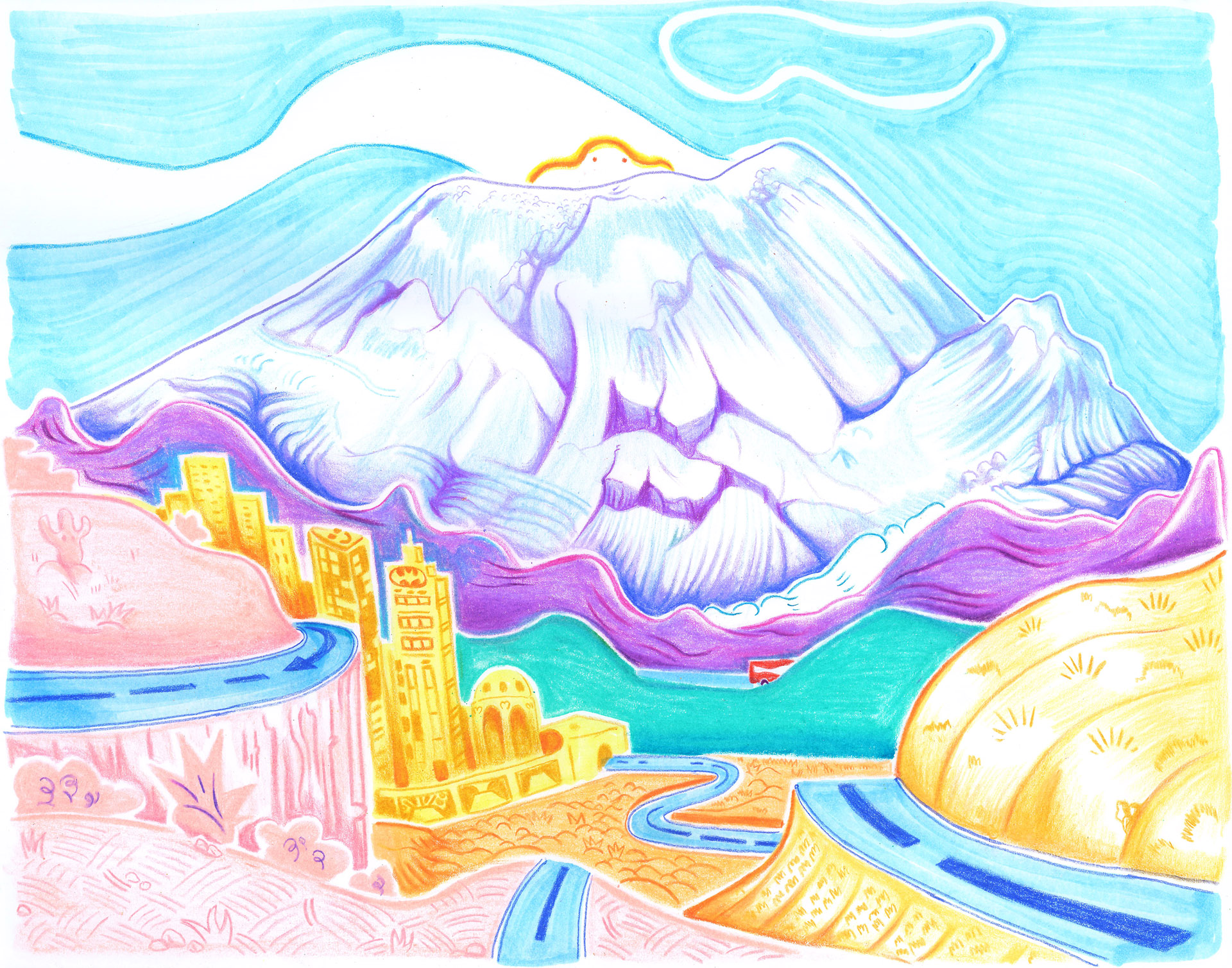Chapter 3
The speaker: everything arises from how Israel Urmeer relates to the landscape. And, the relationship with this world arises from the technologies of the image (i.e. cinema, animated cartoons, documentaries, news, comics). This modern strategy of going to the territory and inspecting it and getting closer to it and being with the community and finding relationships and then extracting all of that and displaying it somewhere else (i.e. ethnographer’s practise) doesn’t have to do with his current exercise. And although Urmeer does not have a direct link with this community, all this energy flows through him when he is exposed to those mediums (i.e. technologies of the image – mentioned above). His life is animated by these fictions and fantasies (that have built these notions of the Mexican). And, Urmeer has always asked how it all lives through him. Because when he started investigating volcanoes (these organs of the earth), the way he got there was through a landscape drawing that he was doing. And, in that moment he realized that landscapes somehow play an important role in pop culture. Then Urmeer began to wonder which mountains and what forms of landscape were being traversed by this consumption of pop culture. In Mexico, one of the figures that is consumed in this way is Popocatépetl and Iztaccíhuatl. And, he told me that there are several books that tell their story. And that the people who live in the vicinity of these volcanoes have an affective relationship with these two volcanoes: they call them “Don Goyo” and “Mujer dormida” (which literally has the shape of a sleeping woman). Anthropomorphization reaches such a level that every year they celebrate their birthday with gifts and festivities. And, that amazed him. It made him stand in awe when Urmeer was before a landscape or, more specifically, an image of a landscape that was used in the news and in the books and on YouTube. A visual material so attractive that highlighted the “real” volcanoes. In fact, due to the pollution of the city, there are days when it is almost impossible for someone to see them easily. After December 21, 1994, when the Popocatepetl spewed gas and ash, a narrative was developed (driven by Hollywood machinery) that they were a threat to Mexico City. And, in case it wasn’t clear: Hollywood has created a notion of nature as the enemy of humanity as if natural disasters were to end life as we know it. This image is so intense in the collective imagination that they’ve built an option (with private and public cameras) to observe the volcano 24/7 through YouTube. And this monitored landscape (which is a global symptom) doesn’t appear in the current context (i.e. in ¡POPOP! for instance the completely ubicuos Amazon box is in our current times a traceable and always-monitored being) as an archive, as a neutral data. Rather, the landscape appears as a translation through animated illustration. He told me how everything (at the beginning, in the history of animation) was animatedly spirited: objects suddenly came to life, they had faces full of life and soul: nothing but a reflection of capitalism (which function is to animate things: make them alive, so that people would want to consume them). Everything here has to do with this excess of life, with a life instinct (eros), with a continuous balance (in the line of the Gaia hypothesis), despite the fact that, in reality, the earth can also die if we carry on treating it as bad as we do. When Eisenstein came across Disney’s animation, his head was blown away by all these plastic forms (of light, of color, the interaction between figures, how they mutate), and he leaned on the universe of plasma – which surround us today – to understand it. And, in this plasmatic imagery of our current system, we find out, let us not forget, that “only the plasmic substance can be said to be immortal”.
(The house rises. Cheers.)









